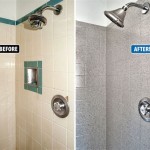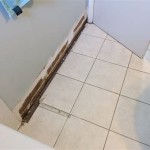Under Sink Cabinet Design for Bathroom
The under-sink cabinet is a crucial, often overlooked, element in bathroom design. It provides essential storage, conceals plumbing, and contributes significantly to the overall aesthetic of the space. Effective under-sink cabinet design requires careful consideration of dimensions, materials, functionality, and style. This article explores various aspects of under-sink cabinet design, providing insights for creating a functional and visually appealing bathroom.
The primary function of an under-sink cabinet is to provide storage. Bathrooms often lack adequate space for toiletries, cleaning supplies, and other essentials. A well-designed under-sink cabinet maximizes the available area, offering a convenient and organized solution. Beyond storage, these cabinets also serve a practical purpose by concealing unsightly plumbing fixtures, such as pipes and drains, contributing to a cleaner and more polished look. Choosing the appropriate style and finish further enhances the overall design, allowing the cabinet to blend seamlessly with the rest of the bathroom décor.
Effective under-sink cabinet design must address challenges presented by the presence of plumbing. Standard cabinets may require modification to accommodate pipes, potentially reducing storage space. Careful planning during the design phase minimizes these issues, allowing for a more efficient use of the available volume. Custom-built cabinets offer greater flexibility in this regard, adapting precisely to the specific plumbing configuration. However, even standard cabinets can be adapted with strategic cutouts and shelving arrangements.
Optimizing Space and Functionality
One of the primary considerations in under-sink cabinet design is optimizing space and functionality. Given the limited area available in most bathrooms, it is essential to make the most of every inch. This can be achieved through various design strategies, including the integration of pull-out shelves, organizers, and specialized compartments. These features allow for better organization and accessibility, preventing items from being lost or forgotten in the back of the cabinet.
Pull-out shelves are particularly useful for storing items that are frequently used. Instead of having to reach deep into the cabinet, users can simply pull out the shelf, making it easier to access desired items. Organizers, such as dividers and containers, help to keep the cabinet tidy and prevent clutter. Specialized compartments can be designed to accommodate specific items, such as hair dryers, curling irons, or cleaning supplies. Careful consideration of these features during the design process can significantly enhance the functionality of the under-sink cabinet.
Another important aspect of optimizing space is the use of vertical space. Tall cabinets can accommodate multiple shelves, providing ample storage for a variety of items. Adjustable shelves offer even greater flexibility, allowing users to customize the cabinet to their specific needs. In addition, the space on the inside of the cabinet door can be utilized for hanging small items, such as cleaning tools or small containers.
The choice of door style also affects functionality. Standard hinged doors require clearance space to open, which may be a constraint in smaller bathrooms. Sliding doors or bi-fold doors can be a more space-efficient alternative. These door styles require less clearance space and allow for easier access to the cabinet's contents.
Material Selection and Durability
The choice of materials plays a crucial role in the durability and longevity of an under-sink cabinet. Bathrooms are typically humid environments, so it is essential to select materials that are resistant to moisture and water damage. Common materials for under-sink cabinets include wood, plywood, MDF (Medium-Density Fiberboard), and laminate.
Solid wood is a durable and aesthetically pleasing option, but it is also the most expensive. Wood can warp or rot if exposed to excessive moisture, so it is important to choose a wood species that is naturally resistant to water damage, such as cedar or teak. Additionally, wood cabinets should be properly sealed and finished to protect them from moisture.
Plywood is a more affordable alternative to solid wood. It is made from layers of wood veneer glued together, which makes it more resistant to warping and cracking than solid wood. However, plywood is still susceptible to water damage, so it should be properly sealed and finished.
MDF is a manufactured wood product made from wood fibers and resin. It is a relatively inexpensive material that is smooth and easy to paint or laminate. However, MDF is highly susceptible to water damage and should be avoided in areas that are likely to get wet. If MDF is used, it should be thoroughly sealed and finished.
Laminate is a thin layer of plastic or other material that is bonded to a substrate, such as plywood or MDF. Laminate is a durable and water-resistant material that is easy to clean. It is available in a wide variety of colors and patterns, making it a versatile option for under-sink cabinets. Laminate is often a practical and cost-effective choice for bathroom cabinets.
Beyond the core material, hardware choices also impact durability. Hinges, pulls, and knobs should be made from rust-resistant materials such as stainless steel or brass to ensure long-term performance in a humid environment. The finish on these hardware pieces should also be durable and resistant to corrosion.
Aesthetic Considerations and Style
The under-sink cabinet contributes significantly to the overall aesthetic of the bathroom. The style and finish of the cabinet should complement the rest of the bathroom décor, creating a cohesive and harmonious look. There are a wide variety of styles to choose from, ranging from traditional to modern.
Traditional under-sink cabinets often feature raised panel doors, ornate hardware, and a rich wood finish. These cabinets are typically more elaborate and detailed than modern cabinets. They can add a touch of elegance and sophistication to the bathroom.
Modern under-sink cabinets typically have clean lines, minimalist hardware, and a simple finish. They often feature flat panel doors and a sleek, contemporary look. Modern cabinets can create a more streamlined and uncluttered bathroom.
The choice of finish can also significantly impact the aesthetic of the cabinet. Painted cabinets are available in a wide variety of colors, allowing users to customize the cabinet to their specific tastes. Stained cabinets showcase the natural beauty of the wood grain. The choice of finish depends on the desired look and feel of the bathroom.
The color of the cabinet should also be carefully considered. Light-colored cabinets can make a small bathroom appear larger and brighter. Dark-colored cabinets can add a touch of drama and sophistication to a larger bathroom. The color of the cabinet should complement the other colors in the bathroom, such as the wall color and the flooring.
Beyond the basic style and finish, details such as door handles, drawer pulls, and decorative trim can further enhance the aesthetic appeal of the under-sink cabinet. These details should be carefully chosen to complement the overall design of the bathroom. Consider the shape, color, and material of these elements to ensure they contribute to a cohesive and visually appealing look.
The integration of lighting can also enhance the aesthetic and functionality of the under-sink cabinet. Under-cabinet lighting can provide task lighting for grooming and other activities. Interior lighting can make it easier to find items inside the cabinet. The type and placement of lighting should be carefully planned to maximize its effectiveness.
Ultimately, the design of the under-sink cabinet should reflect the homeowner's personal style and preferences. By carefully considering the various factors discussed in this article, it is possible to create a functional and visually appealing under-sink cabinet that enhances the overall design of the bathroom.

Frances Woven Rattan 2 Door Bathroom Undersink Cabinet Mint Green

Aoibox Modern 23 5 In W X 11 75 D Rectangular Pedestal Under Sink Grey Bathroom Vanity Cabinet With Shelves And 2 Door Snsa05 2ba009 The Home Depot

Frances Woven Rattan 2 Door Bathroom Undersink Cabinet White

Kleankin Pedestal Sink Storage Cabinet Bathroom Under With 2 Doors And Open Shelf Vanity Grey 834 431gy The Home Depot

Bathroom Storage Ideas Tips And Advices

The Perfect Under Sink Organization Solution Thrifty Decor Diy And Organizing

25 Brilliant Ways To Organize Under The Bathroom Sink
21 Small Bathroom Storage Ideas That Really Work

Under Sink Storage Ideas For Your Home Designcafe

Vanities Furniture Style Vs Traditional Cabinet
Related Posts







